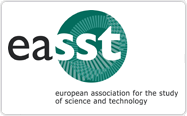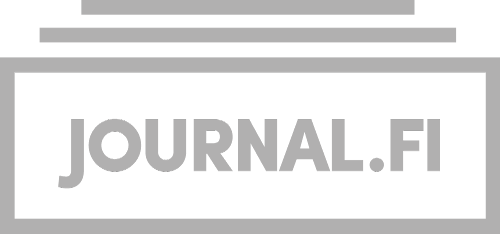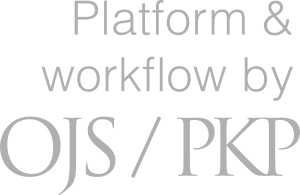Call for Papers: Special Issue "Repairing public sector (with) artificial intelligence"
Special Issue for Science & Technology Studies
Guest editors:
Tuukka Lehtiniemi, Centre for Consumer Society Research, University of Helsinki, tuukka.lehtiniemi@helsinki.fi
Heta Tarkkala, Academic disciplines of the Faculty of Social Sciences, University of Helsinki, heta.tarkkala@helsinki.fi
Repairing public sector (with) artificial intelligence
Artificial intelligence (AI) applications, tools, and services are already ubiquitous companions of our lives, with familiar examples including search, chatbots, content moderation, targeting, risk scoring, recommender systems or various forms of task automation. We have grown to accept technologies that automate, optimize, generate, predict, target, and recommend in some contexts, for example consumer services. These technologies however might sit less comfortably with the provision of services and decision-making processes of the public sector, which tends to operate with a distinct decision-making ethos, a focus on rights and entitlements of citizens, a commitment to democratic processes, and a basis in shared public values. Well-known challenges with public sector AI projects offer reminders of AI’s potential for dire social and societal consequences: its introduction in sensitive domains, for example, can bring biases, errors, novel forms of discrimination, amplification of inequalities, or increased surveillance (e.g., Allhutter et al., 2020; Broussard 2023; Eubanks, 2018; Marjanovic et al., 2021; Rachovitsa and Johann, 2022). Yet, across contexts, strategies and policy documents tend to involve AI boosterism and techno-optimism, proffering AI as a source of positive social change and public sector improvements (e.g., Bareis and Katzenbach, 2022).
It is unlikely that the trend towards AI will be reversed anytime soon, and our lives will likely increasingly involve public sector AI applications and services. Scholars in STS and related fields have raised awareness of what can go wrong with AI, but what might eventually work satisfactorily or even be desirable is usually left for others, often technology developers, to specify and experiment on (e.g., Susser, 2022).
With this in mind, the Special Issue aims to help form substantive ideas about AI developments in the public sector. As our point of departure, we take the concepts of breakdown and repair (see Jackson, 2014), and we are interested in STS research that develops and mobilizes these concepts to examine public sector AI.
Focusing on breakdown is a well-known STS strategy: Susan Leigh Star (1999) famously discusses its merit as a conceptual probe, since infrastructures and other obscure things, which normally remain hidden, gain visibility through their breakdown or malfunction. Breakdown therefore foregrounds things that otherwise escape attention. Besides dramatic events like sudden collapses, breakdown can be considered as the normal and continuous state of the world always falling apart (Graham and Thrift, 2007; Jackson, 2014). Repair is the flipside of breakdown, a process suggested and often necessitated by dramatic or everyday falling-apart. The conceptual tools of breakdown and repair highlight how socio-technical artifacts and systems develop not only with initial innovations, but especially when they subsequently break down and call for repair or maintenance (Jackson, 2014). With repair, broken-down things are not just restored back to their earlier state, but also grow and change as a result: breakdown, as Steven Jackson (2014) contends, is generative and productive, “a site of some of the most interesting and consequential operations”. The breakdown-repair process calls for productive attention and involvement: examining the process can reveal, for example, the ways in which human and non-human actors make up sociotechnical systems in a process that involves ongoing creativity (Tanweer et al., 2016; Pink et al., 2016).
Due to the processual nature of breakdown and repair, the concepts allow thinking through the use and effects of AI in a critical yet productive manner. For the purposes of this Special Issue, breakdowns are at the locus of critical analysis: they showcase when things go wrong, when expectations are not met, or when progress stops. More pressingly, breakdowns promote thinking in terms of repair, signifying restoration but also development, transformation, and renewal. Focusing on the breakdown-repair process, we believe, can produce new ways to understand how AI developments could be made to matter in the public sector (Lehtiniemi, 2023); for example, if, and how, they can fit in with public sector ethos, values, or professional practices.
Contributions to the Special Issue, then, are expected to draw from examples of breakdown – either dramatic or quotidian, and in its various forms – with the focus on the potential for, and possible forms of, repair. Besides empirically grounded analyses, we are also open to submissions where empirical cases serve as points of departure for conceptual development and methodological reflections. We recognize that in the context of public sector AI, breakdowns prompting acts of repair can occur in several senses, scales, and levels, and there are different ways in which AI might fall short of reaching the social, societal, or organizational aims and expectations that propel its development. Breakdowns might, for example, highlight problems with technologies themselves; or AI might work in the technical sense, yet its deployment might make visible or tangible organizational, social, or even regulatory breakdowns; or breakdowns might be traced back to expectations or imaginaries about how AI technologies work or ought to work. The Special Issue invites these and other interpretations for breakages: considering how breakdown is inevitable in all human activity, technologies as well as the contexts of their development and implementation might be considered as possible sources of breakdowns, and as equally potential opportunities to tease out moments, practices and negotiations related to repair as preserving, recreating, repurposing, or renewing (McLaren et al. 2020).
We welcome submissions that probe the possibilities, limitations, successes, and failures of repair involved in public sector AI-related processes, projects, pilots, trials or even demonstrations. We encourage submissions to account for the local and situational specificity of AI-related projects and to discuss AI in its often immature, loosely defined, and at times problematic forms. Submissions might consider the situated repairs prompted by the ways in which AI systems fail to meet expectations of technology’s potential. Submission might probe how public servants or citizens act as maintainers, making immature, incomplete, or broken-down technologies, processes, and organizational arrangements work for them. Submissions might consider AI-related projects involving resilience to dramatic failure and breakdown; or highlight when repairing is not the preferable option for the actors involved; or attend to situations and contexts in which things might be beyond repair.
Submit an abstract of maximum 1000 words (excluding references) by the deadline 24.05.2024. Indicate the names of all authors, their institutional affiliations, and the email address of the corresponding author on the top of the abstract and send it as a PDF document to the guest editors via email: tuukka.lehtiniemi@helsinki.fi and heta.tarkkala@helsinki.fi.
Decisions on abstracts will be communicated by 14.6.2024. Prospective deadline for full manuscript submission is on 30.10.2024. For further information, please contact the guest editors.





